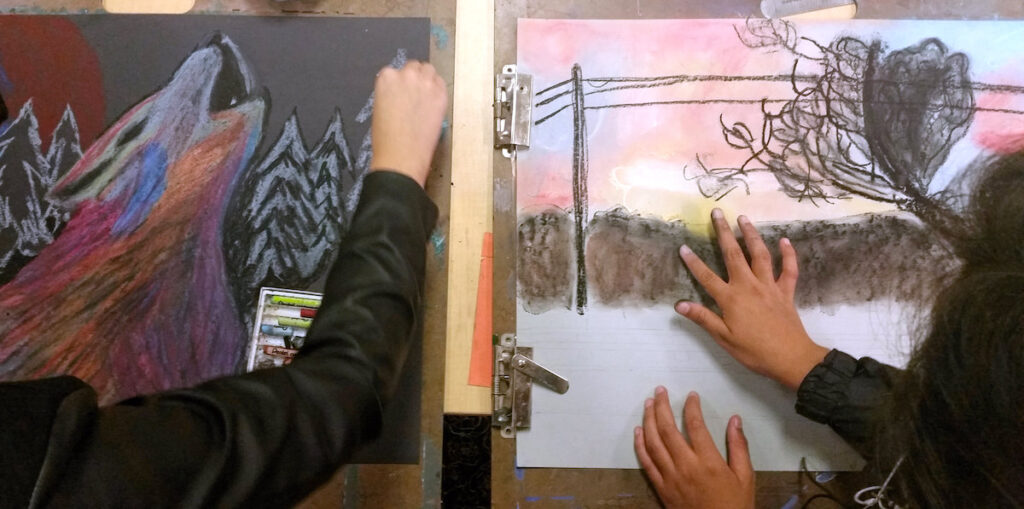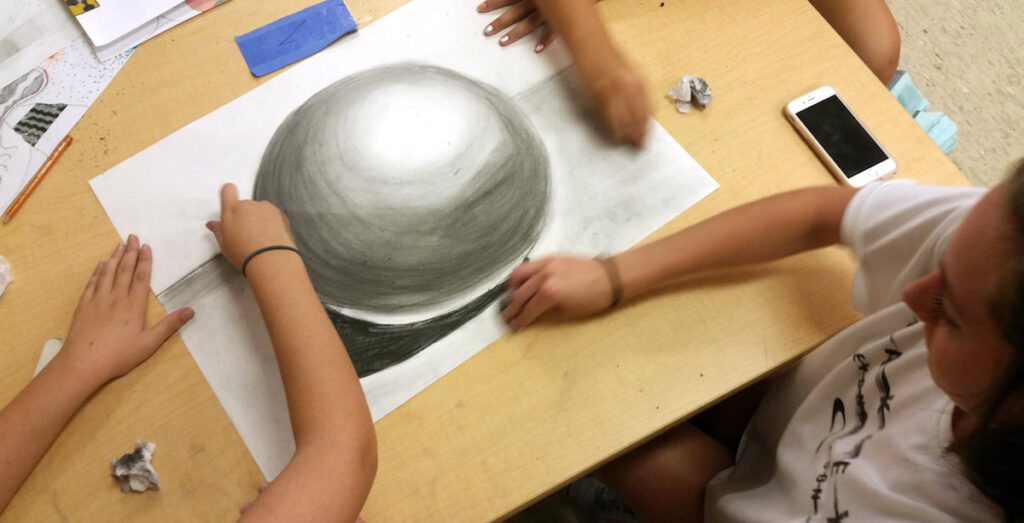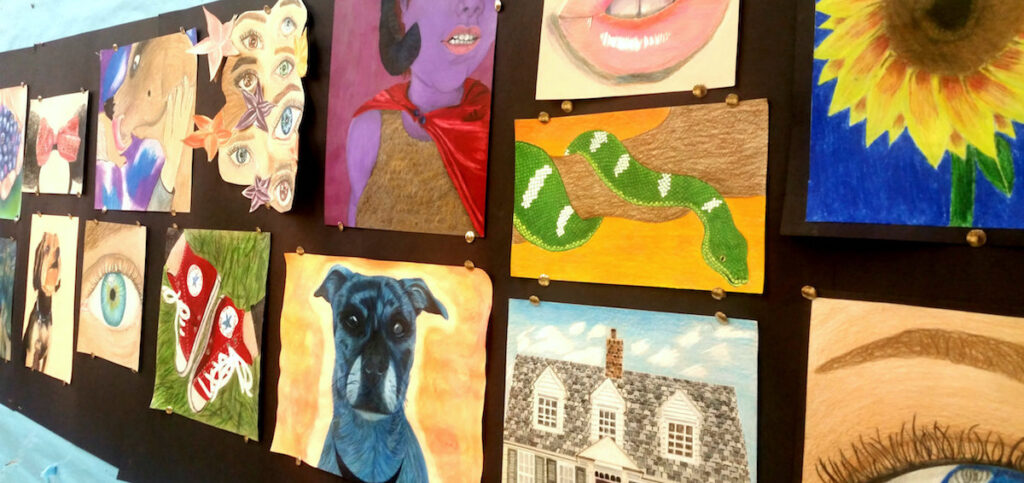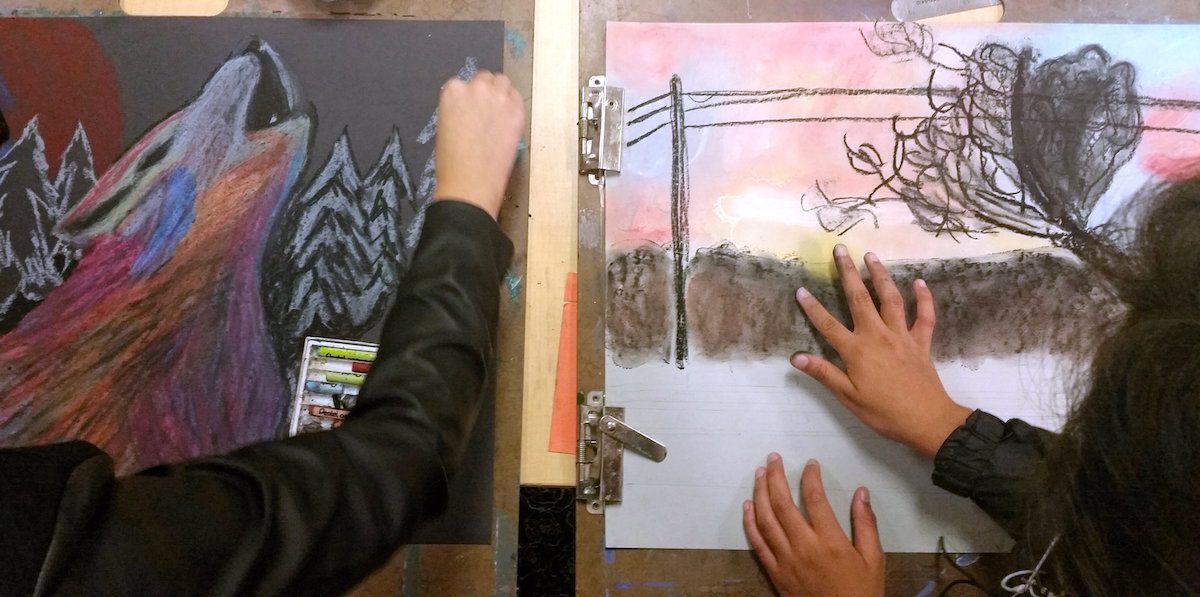Art teachers everywhere wrestle with how to balance teaching skills while leaving room for student choice.
On the one hand, students need to be taught specific skills and techniques. Following the teacher and learning these skills allows students to create aesthetically pleasing art. Without basic skills, students have a hard time successfully rendering their ideas.
On the other hand, personal choice is essential to artistic expression and central to what it means to be an artist. Experiences offering more student choice tend to be open-ended and individualized.
So, what’s an art teacher to do?
After personally grappling with this question, I’ve discovered a way to balance teaching skills with offering a high level of student choice: Bootcamps.

What are Bootcamps?
The goal of a bootcamp is to teach students a specific skill or process. You can teach almost anything, from figure drawing to perspective to how to use watercolors, using the bootcamp approach. Bootcamps also include time for students to use their new skills in an open-ended application.
To see what a bootcamp looks like in my classroom, check out the following three links:
Bootcamps take a different approach to how a learning experience is organized, drawing inspiration from the structure of the Gradual Release Model. Using the power of collaboration to get kids invested and anchor charts to provide support, information really sticks.
Bootcamps are something that choice-based teachers often use. If you’re interested in learning more about choice-based art ed, be sure to check out the AOE course on the topic. Explore the choice spectrum to give your students more autonomy without losing control!
The 3 Components of Bootcamps
All bootcamps have three parts to help students learn skills and choose how to apply and internalize their new knowledge.
1. Pre-assessment and Introduction of new skills
Before teaching a new skill, it’s important to know where your students are. You can do this with a short quiz, a sketching activity, or another brief pre-assessment related to the upcoming lesson.
Next, you can introduce new skills using the Gradual Release Model.
The model is sequenced into the following four steps:
- I Do – the teacher leads instruction
- We Do – the teacher leads guided practice
- You Do Together – students practice collaboratively
- You Do – students practice independently

2. Open-ended application
Once students have learned new information, they are asked to apply it during an open-ended learning experience. For example, if students are learning techniques for using colored pencils, the application section of the bootcamp could simply be asking them to create a drawing of their choice using that medium.

To support students through the decision-making process of planning an artwork, I teach them the Artistic Thinking Process. The high level of student choice in this section lends itself to authentic assessment. If I make the decisions about the content and process for them I will not be able to see what they know.
3. Reflection
After students have applied new learning, it’s important to ask them to reflect on what they’ve achieved. You can do this in a variety of ways. In my classroom, I find chatting via one-on-one conferences or asking students to reflect in writing on their personal blogs both work well.
Regardless of the type of reflection, I ask students to compare their pre-assessment to the work they created during the open-ended application phase of the bootcamp. This direct comparison creates a clear picture of what they’ve learned. This type of reflection is not only important for me and the students to see, it’s equally important to show parents and administrators!
In my experience, bootcamps are powerful instructional tools that bring together the best of direct instruction and student choice. To me, this way of teaching makes so much sense. It gives us a way to teach students new skills while letting them retain their independence. Best of all, it creates lasting knowledge!
Do you use bootcamps in your classroom? How do you run them?
How else have you used the gradual release model?
Magazine articles and podcasts are opinions of professional education contributors and do not necessarily represent the position of the Art of Education University (AOEU) or its academic offerings. Contributors use terms in the way they are most often talked about in the scope of their educational experiences.





